“If we don’t study the mistakes of the future, we’re doomed to repeat them the first time :(” — Ken M, comedian
[Editor’s Note: Today’s blog post is an excerpt from Mr. Robert J. Hranek‘s short story entitled “Angry Engineer,” submitted to the 2019 Mad Scientist Science Fiction Writing Contest. The underlying premise of this contest was that, following months of strained relations and covert hostility with its neighbor Otso, Donovia launched offensive combat operations against Otso on 17 March 2030. Donovia is a wealthy nation that is a near-peer strategic competitor of the United States. The U.S. is a close ally of Otso and is compelled to intervene due to treaty obligations and historical ties. Among the many future innovations addressed in his short story, Mr. Hranek includes a “pre-mortem” in the form of two dozen lessons learned, identifying potential “mistakes of the future” regarding the Battle for Otso, so that we’re not “doomed to repeat them the first time!” Enjoy!]
The U.S. responded to Donovia’s invasion of Otso by initiating combat operations against the aggressors on 1 April 2030 — April Fools’ Day. Thousands of combatants died on both sides, mostly on ships; hundreds more were wounded, primarily from the land battle, and an unverifiable number of casualties occurred worldwide due to the sabotage of power grids and other infrastructure. An accurate civilian count was impossible in the chaos of reestablishing power, computer, and financial systems worldwide.
Although U.S. forces were considered to have ‘won’ tactically, no significant change in control of territory resulted from the war. Both sides’ weaponry was very lethal and very fast. Overall this worked in the defender’s favor because attacking forces were too exposed, detectable, and vulnerable to last very long on the battlefield. Stealth AI drones (both airborne and undersea) were the only systems that survived very long in combat, and then only as long as they remained undetected. Even an airborne drone with the signature of a small bird would be shot down quickly if it could be tracked and engaged by speed-of-light directed energy weapons. With no strategic victor and government leadership on both sides fearful of starting World War III, an uneasy military stalemate continued for several weeks…
The following are 24 lessons learned from the U.S.’s first battle with a near-peer competitor in over 80 years:
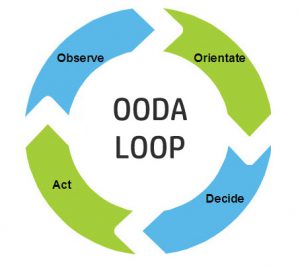 Lessons Learned 1 (LL1): History repeated itself in that no battle plan ever survives contact with the enemy. The unforeseen consequences of reliance on automation and the resulting escalations almost lead to World War III. No matter how sophisticated our systems become, it will always be important to keep human decision-making in the OODA (Observe, Orient, Decide, Act) loop.
Lessons Learned 1 (LL1): History repeated itself in that no battle plan ever survives contact with the enemy. The unforeseen consequences of reliance on automation and the resulting escalations almost lead to World War III. No matter how sophisticated our systems become, it will always be important to keep human decision-making in the OODA (Observe, Orient, Decide, Act) loop.
LL2: Donovia was able to launch a ‘surprise’ attack on Otso because U.S. human intelligence analysis grew too dependent on their automated tools. The National Technical Means (NTM) software identified the Donovia troop movements as something it had seen many times before, labelled them as routine, and therefore the analysts reported them as routine as well.
 LL3: Directed microwave and other Electro-magnetic Pulse (EMP) weapons performed within accepted parameters. The 20th century legacy electronic systems were rendered completely useless when overwhelmed with more energy than they could handle.
LL3: Directed microwave and other Electro-magnetic Pulse (EMP) weapons performed within accepted parameters. The 20th century legacy electronic systems were rendered completely useless when overwhelmed with more energy than they could handle.
LL4: Differences in assumptions is what lead to the escalations on April 1st. The U.S. model of Artificial Intelligence (AI) weaponry was to always require human authorization before firing a weapon. Donovia’s paradigm was that if an AI had its ‘secure’ communications severed, then that meant it was to engage the enemy ASAP. Donovia’s Lurker Unmanned Underwater Vehicles (UUVs) had their communications severed with their parent vessels in a way that was interpreted by its on-board AI as the destruction of its parent vessel. At that point, it located the highest value target in range, maneuvered into position, and fired its supercavitating torpedo into the USS Ronald Reagan, inflicting crippling damage leading to the deaths of over 1,000 crewmembers.
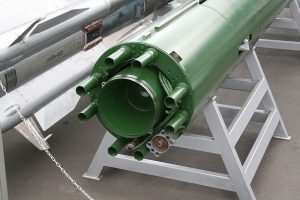
LL5: There is still no effective defense versus a supercavitating torpedo once launched. Any platform capable of carrying one must be considered a threat and be dealt with accordingly. Therefore, research into better detection of all stealth platforms is critical to the future of U.S. Naval dominance.
LL6: Stealth technology cannot be relied upon to keep pilots safe. Modern stealth aircraft are very effective at diverting radar energy away from its source, but that same aircraft becomes very detectable when a radar source is synchronized with a separately located radar receiver. All that is required is a significant offset angle between the radar source, the target aircraft, and the radar-receiving sensor.
 LL7: The “Four-ship” concept of each F-35 controlling three Unmanned Combat Air Vehicles (UCAVs) in combat is still considered the most effective way to employ these aircraft, but the piloted F-35 may need to control its UCAVs without coming into Line of Sight (LOS) of sophisticated enemy air defenses. The alternatives are to allow the UCAVs to perform combat missions completely independently once in flight, accept the risks of controlling UCAVs remotely with the possibility of communications loss, or even to risk those UCAVs being taken over by the enemy.
LL7: The “Four-ship” concept of each F-35 controlling three Unmanned Combat Air Vehicles (UCAVs) in combat is still considered the most effective way to employ these aircraft, but the piloted F-35 may need to control its UCAVs without coming into Line of Sight (LOS) of sophisticated enemy air defenses. The alternatives are to allow the UCAVs to perform combat missions completely independently once in flight, accept the risks of controlling UCAVs remotely with the possibility of communications loss, or even to risk those UCAVs being taken over by the enemy.
LL8: Evaluation of Donovia’s long-range stealth UCAV capabilities were incomplete. They were correctly analyzed to be too small to deliver a significant missile or bomb load, so they were incorrectly surmised to be of little threat as just another reconnaissance drone. U.S. intelligence intercepts of Donovia incorporating low power lasers on them assumed that this would be used for the designation of targets for separately launched laser-guided weaponry. The truth that they were designed to blind the pilots of aircraft deep within enemy airspace was not realized until after the loss of an Airborne Warning and Control System (AWACS) aircraft. The only current defense against this is to wear headgear designed to instantly darken when encountering a nuclear flash, which many pilots did not wear — until now.
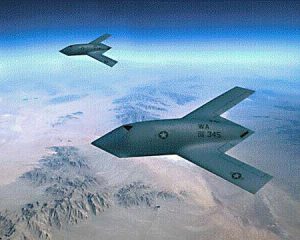 LL9: Stealth UCAVs proved to dominate the airspace, unless they could be shot down with energy weapons. Their combat capabilities were superior to much larger piloted vehicles due to not being hampered by human limitations. They instantly followed their programming, regardless of how long they were airborne, could maneuver at much higher gees than piloted fighters, and cost less to deploy.
LL9: Stealth UCAVs proved to dominate the airspace, unless they could be shot down with energy weapons. Their combat capabilities were superior to much larger piloted vehicles due to not being hampered by human limitations. They instantly followed their programming, regardless of how long they were airborne, could maneuver at much higher gees than piloted fighters, and cost less to deploy.
LL10: Our Matter Lasers were much more effective at destroying incoming artillery and mortar shells than Donovia’s more conventional laser defenses. It vindicated all the effort and expense that was undertaken to transform this technology from a research project into the most effective air defense system on Earth. By delivering an energy density thousands of times stronger than conventional lasers, it destroyed each incoming round hundreds of times faster.
 LL11: Donovia’s standard laser point defenses also proved capable of destroying incoming missiles and artillery, but they were relatively easy to overwhelm, since they took much longer to eliminate each incoming threat. Their lasers proved to be useless at intercepting U.S. naval hypervelocity railgun rounds.
LL11: Donovia’s standard laser point defenses also proved capable of destroying incoming missiles and artillery, but they were relatively easy to overwhelm, since they took much longer to eliminate each incoming threat. Their lasers proved to be useless at intercepting U.S. naval hypervelocity railgun rounds.
LL12: The U.S. was not as reliant of GPS guidance as Donovia assumed. The deployment of advanced inertial guidance systems rivalling GPS accuracy had come just in time to prevent the loss of high-precision GPS from being a crippling blow to U.S. combat capabilities.
LL13: The Expanded Advanced Battle Management System (EABMS) multi-service network was critical to U.S. forces being able to effectively coordinate their efforts even while exposed to Donovian electronic warfare. EABMS proved that integrated warfighters can still perform their missions even after several parts of the network were destroyed or disabled.
 LL14: The Exoskeleton enhancements of the first pilot’s rescue team were deemed crucial to his successful retrieval. Their greater strength, endurance, and body armor helped them to safely return to U.S. lines. Perhaps even more valuable than the physical aspects of their equipment were their Augmented Reality (AR) displays that allowed them superior battlefield awareness and the ability to see through camouflage as if it was not even there. It is recommended that the U.S. continue development of the next generation of full-body powered exoskeletons.
LL14: The Exoskeleton enhancements of the first pilot’s rescue team were deemed crucial to his successful retrieval. Their greater strength, endurance, and body armor helped them to safely return to U.S. lines. Perhaps even more valuable than the physical aspects of their equipment were their Augmented Reality (AR) displays that allowed them superior battlefield awareness and the ability to see through camouflage as if it was not even there. It is recommended that the U.S. continue development of the next generation of full-body powered exoskeletons.
LL15: The performance of U.S. fast-attack hovercraft was disappointing. Their battlefield speed advantage was offset by their vulnerability. Even minor damage to their air-cushion skirts would degrade their maneuverability so much that they suffered twice the casualty rate as their wheeled and tracked counterparts.
LL16: Most U.S. Soldiers Wounded In Action (WIA) on the battlefield suffered from burn-like damage. The same Donovian non-lethal microwave projectors used for crowd control had a high-power capability used, to inflict severe skin damage through cloth armor.
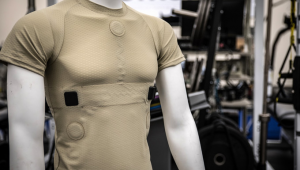 LL17: U.S. medical triage was greatly aided by medical sensors woven directly into Soldiers’ uniforms. This led to faster diagnosis, treatment, and recovery of casualties than in any previous conflict.
LL17: U.S. medical triage was greatly aided by medical sensors woven directly into Soldiers’ uniforms. This led to faster diagnosis, treatment, and recovery of casualties than in any previous conflict.
LL18: Mines remain the scourge of the battlefield, with AI-controlled mines being particularly insidious. Some were even programmed to let several combatants pass by before detonating in the middle of a formation of troops that thought the area had already been cleared.
LL19: The fledgling industry of orbital cleanup services (satellites designed to collect and/or dispose of other inactive satellites) received a major inadvertent boost from renewed concerns over orbital debris.
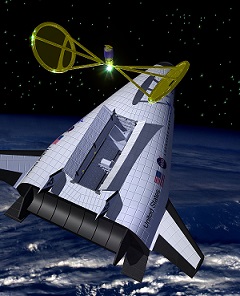 LL20: The chaos of the space battle allowed our Space Force to capture and return to Earth a few chosen Donovian high-interest military satellites. U.S. analysts were surprised by several aspects of Donovian design, but those results have no further need for discussion in this review of the conflict over Otso.
LL20: The chaos of the space battle allowed our Space Force to capture and return to Earth a few chosen Donovian high-interest military satellites. U.S. analysts were surprised by several aspects of Donovian design, but those results have no further need for discussion in this review of the conflict over Otso.
LL21: There was speculation of possible Donovian deployment of tailored genetically-engineered bioweapons, but these were not supported by any confirmable evidence. On tactical timescales, bioweapons are still deemed ineffective. The ability to inflict casualties on an enemy with bioweapons while trying to limit the damage to your own personnel is still an unresolved strategic issue.
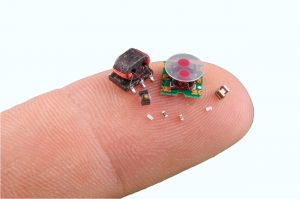 LL22: The reports of Donovia having anti-personnel weapons that used nanites were also unsupported. This technology is just starting to be used industrially, and nanite-based weapons are considered to be at least a decade away from being ready for battlefield use.
LL22: The reports of Donovia having anti-personnel weapons that used nanites were also unsupported. This technology is just starting to be used industrially, and nanite-based weapons are considered to be at least a decade away from being ready for battlefield use.
LL23: There were also reports on social media of Donovian atrocities towards Otso’s civilians, but no supporting evidence has been found for these numerous dubious claims.
LL24: This conflict resulted in most nations turning back to the U.S. in a leadership role in a way that completely healed the damage to U.S. prestige resulting from its involvement in decades of warfare in the Middle East and Southwest Asia.
If you enjoyed these lessons learned, please read Mr. Hranek’s complete “Angry Engineer” short story here, hosted by our colleagues at Small Wars Journal…
… and see the following insightful Mad Scientist blog posts addressing future warfare:
– Ground Warfare in 2050: How It Might Look, by Dr. Alexander Kott.
– Omega, by Mr. August Cole and Mr. Amir Husain.
Mr. Robert Hranek began his professional career serving in the USAF as a computer programmer for five years, followed by 29 years as a civilian intelligence analyst, systems engineer, and program analyst. He is a vocal Space Exploitation Advocate, reads lots of Science Fiction, gives blood 5 times a year (197 pints & counting!), judges several Science Fairs every year, and runs and drinks with Hash House Harrier groups whenever he can.
Disclaimer: The views expressed in this article are Mr. Hranek’s alone and do not imply endorsement by the U.S. Army Training and Doctrine Command, the U.S. Army, the Department of Defense, or the U.S. Government. This piece is a work of speculative fiction, meant to be thought-provoking, and does not reflect the current position of the U.S. Army.




Really enjoyed this Lessons Learned layout and the larger article in Small Wars. I’ve often seen LL as “lessons observed” from a cynical viewpoint as we seem to identify the same ones over and over with little relief in fixing them.
The underlying theme of “relearning manual tools” is key nowadays. We laugh that our kids and even grandkids have no idea why it’s called “dialing a phone” or “rolling up a window” yet that is the root of a larger problem related to the “love of technology’ that we in the US have latched onto. Recently the Services have shifted back to teaching land forces how to use a map and a lensatic compass https://www.marinecorpstimes.com/news/your-marine-corps/2016/02/11/commandant-to-marines-get-out-your-map-and-your-compass/, although the Army seems to be looking into technology as well https://www.c4isrnet.com/intel-geoint/2017/10/16/the-army-is-developing-navigation-tech-to-help-the-gps-denied-soldier/ and Naval forces are being trained on how to use a sextant https://www.stripes.com/news/break-out-the-sextant-navy-teaching-celestial-navigation-again-1.391219 because life in a (USAF) CDO or (Army) DIL environment is slowly catching on (likewise, development of tools to get around the loss of GPS has been occurring). Navy has always assumed “out of comms” especially in the Pacific and operating in a CDO/DIL environment (from some of the Navy personnel I’ve spoken with on various efforts) seems to reflect that–and this is a mindset going back 200+ years because they assume lack of communications at the tactical level).
The old adage “don’t assume, it just makes an ass out of you and me” should be applied generously these days because technology.